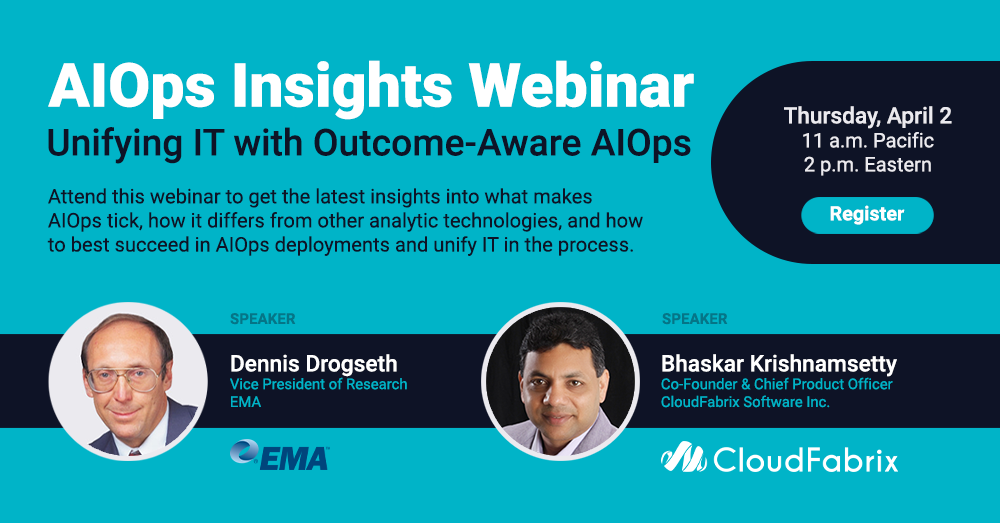Today’s IT systems are more complicated than the yesteryear’s IT systems. This requires individual departments working synchronously to deliver optimized performance, thereby ensuring organizational success.
This additionally necessitates managing and monitoring current IT landscapes. Being able to cope with constant changes, identify risks, errors and other problems, and ensure the entire system continues to run smoothly is essential and is made possible through this. With IT systems changing rapidly, they must be constantly evaluated for compliance with the updated processing, memory, storage, and operational requirements.
Current Challenges
End-to-end visibility
IT Operations need to monitor everything that goes on within the environment. One in four enterprises (1,000+ employees) are increasing their 2020 IT spend due to a recent security incident. In addition, IT blind spots significantly inhibit the ability to comprehensively monitor IT environments and related data.
Data overload
With an increasing workload and volume of work, there is a surplus of data. IT teams must be able to discern which datasets to use. However, in the absence of adequate insight, they are oblivious to the access and use of the remainder of the data.
The absence of adequate information on the various segments and their dynamic nature within an IT environment will severely limit monitoring efforts. Additionally, in the absence of real-time insights, it is not possible to make astute predictions about potential risks or problems. The more complex the IT system, the greater the risk of blind spots limiting competent monitoring processes.
Blind spots
Blind spots are hidden threats to an organization’s IT environment. These are the most vulnerable areas that the IT teams are unaware of. Visibility into these hidden areas usually occurs only when a threat emerges from obscurity leading to a network or an environment-wide crisis.
They can occur on physical, technological infrastructure, and within virtualisation models. In the virtual model, data will never cross a physical host, switch or network, yet traffic is constant. However, this does not aid in pinpointing a location for monitoring leading to a crucial loss of visibility; making prevention, recognition, evaluation, and removal of threats and breaches impossible.
Inadequate on-boarding
With new hires, differential access according to their position and the level of clearance allows for maximum visibility. This can be done by creating new accounts across SaaS providers and granting access to all required data in a timely fashion.
Insider threats
Security threats aren’t always external. Insider threats are far more common and can stem from dissatisfied personnel, careless employees, and compromised individuals. Limiting administrative rights restrict avoidable and destructive changes from being made in a haphazard manner. Establishing and enforcing rigorous email forwarding and competitor sharing policies within company policies can go a long way in curbing insider threats.
Avoidable exposure of confidential information
Collaboration on SaaS systems and applications must be mindful and controlled. However, IT teams are not always aware of every internal and external user with access to sensitive and vital company information.
With external users requiring temporary access to the company data, there is an additional risk that accessed data will be revealed to unauthorized people or corporations. IT teams must be up-to-date about compliance and access permissions. However, with less proactive personnel this is tough to keep track of as they enter and exit groups when beginning or completing an assignment.
Furthermore, SaaS apps are vulnerable to accidental misconfiguration flaws accidentally exposing data. Teams must be managed to anticipate and mitigate unauthorized exposure to confidential data. This can be brought about by ensuring the right members while establishing and implementing policies on external file sharing.
Inadequate enforcement of Data Loss Prevention (DLP) Policies
Misconfiguration in the sharing settings makes it very easy and simple for company data to be exposed. It is therefore imperative and prudent to establish content discovery policies and publicly shared files policies. In their absence, protecting intellectual property or proprietary information is very difficult. This allows visibility into and control over any publicly-facing organizational data.
Compliance Errors
It is imperative that licenses/certifications are maintained, assigned and used correctly, to allow users to successfully complete their tasks. In the absence of tracking features for assigned licenses, it becomes necessary to assign and revoke them as necessary. This constantly exposes confidential data to potential risks with the IT teams being unaware of the development.
Poor maintenance
IT environments today are highly complex. With constant innovation, more systems and technologies are added with respective permissions. This amplifies the risk due to poor maintenance leaving IT teams unaware. Complex IT environments need to be cleaned up on a regular basis, with irrelevant users, empty channels and groups being removed.
Improper off-boarding
Access to company information must be unequivocally revoked for former employees. There is a high risk of harmful behaviour, particularly if the terms of resignation or lay-off were less than favourable.
Are you facing any of these problems with your IT Ops?
CloudFabrix will help you run your IT smoothly seamlessly integrating with all your systems. We will leverage real-time data to provide actionable insights and streamline your IT team. This will allow management of priority tasks rather than wasting time in handling everyday tasks saving labour, money, and time. We guarantee that the long-term impact of AIOps on your IT operations will be transformative.
Please feel free to reach out to us in case of any questions.





